
New Years Hares
January 1st, 2013
I had a wonderful New Year's morning watching a pair of Snowshoe Hares at Hilda Road. Hares are not rare in Ottawa, but they are often hard to see--they camouflage so well, and they're quite shy! This pair were coaxed out of their usual antisocial lifestyle by the prospect of easy food at a platform bird feeder.
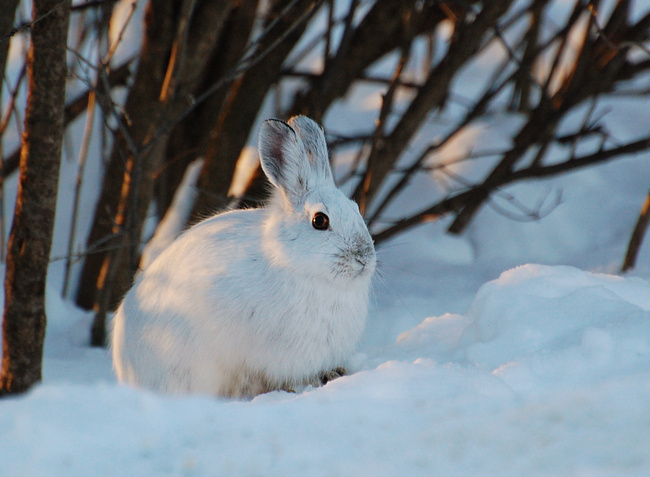
Snowshoe Hares are brown for much of the year and easily mistaken for rabbits, but in winter, they morph into pure snowy white to better blend in with the landscape.
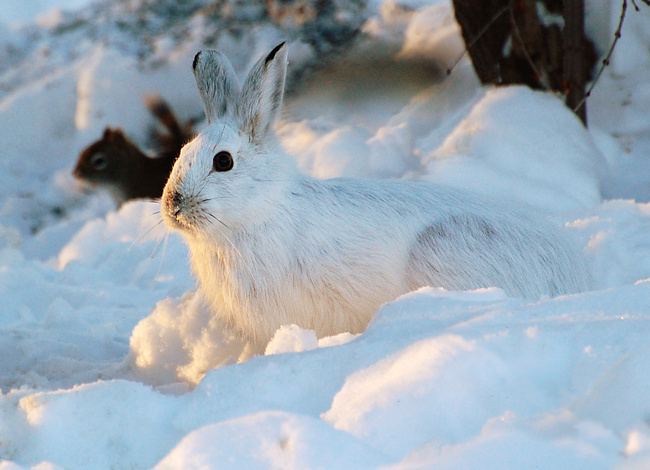
Red Squirrel behind. I wish I'd captured the moment when this cheeky squirrel chased the hare, many times his size, away from the feeder.
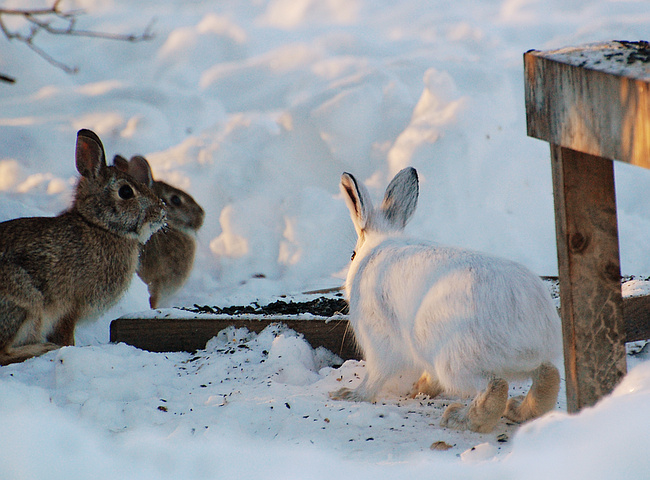
Rabbits patronize the Hilda Rd. feeders occasionally too. They're easily told apart in winter, since they don't change coats as hares do.
Toughing It Out
January 5th, 2013
A collection of photogenic birds braving the Ottawa winter.
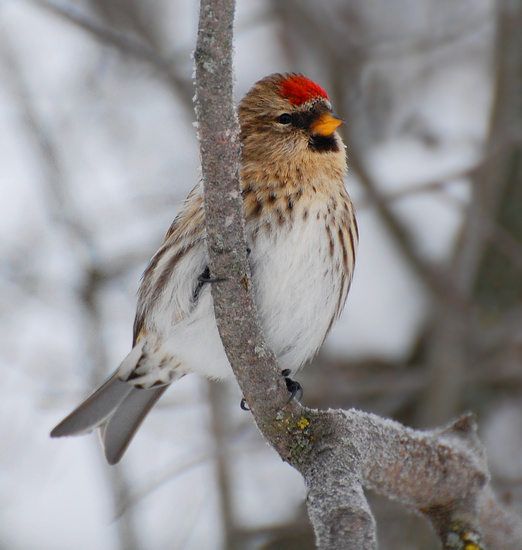
As they did two years ago, Common Redpolls have poured into our area this winter, driven by a low supply of their favorite food (birch seeds) in the far north. I've seen them picking at birch catkins at Stony Swamp, which is neat, but the best way to see them for the purpose of photography is at a feeder, where they can become very tame. This was one of a flock of dozens at the Shirley's Bay feeding station.

Hairy Woodpecker
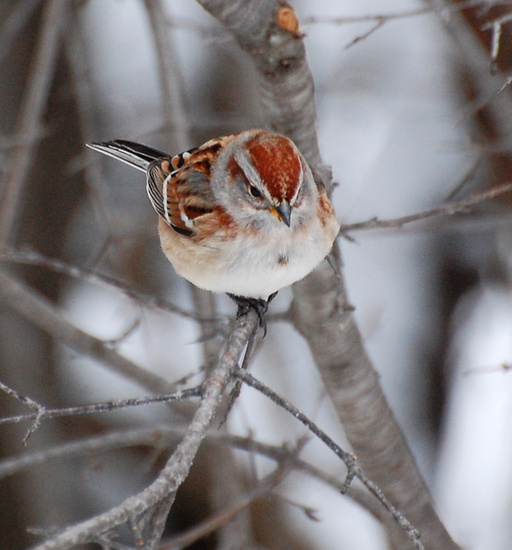
The tundra-breeding (and inaptly named) American Tree Sparrow is one of the very few sparrows that normally winter in Ottawa. Its warm colors brighten the snowy landscape.
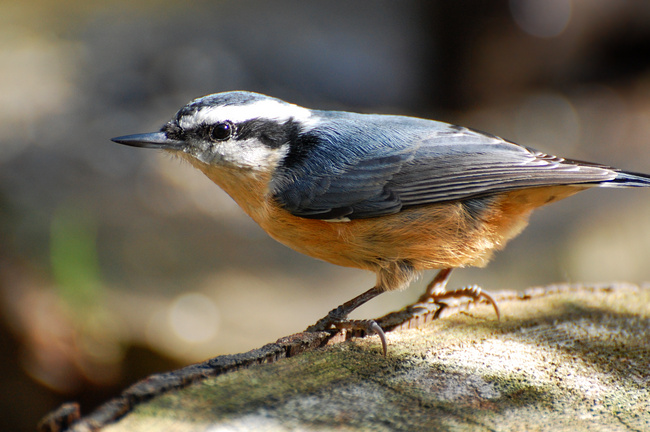
1680x1050 wallpaper
Red-Breasted Nuthatches are spunky little birds, and the ones at Jack Pine Trail are every bit as tame as the chickadees. Sprinkle some seed on a rock or a stump, and you can get some glorious close-ups!
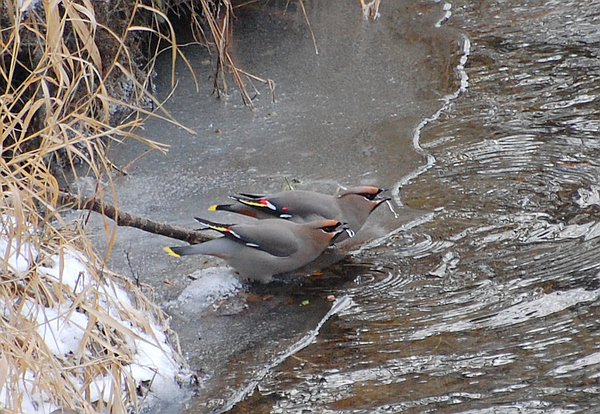
Bohemian Waxwings take a drink from one of the few remaining sources of open water in the city (Rideau River near Hurdman.) When there's no open water to be found, northern birds can get by eating snow.
Don't Mind If I Do
January 11th, 2013
A red squirrel helps himself to the birdseed I scattered on a rock. As you may guess from the amount of green and the strength of the sun, I didn't take this photo very recently!
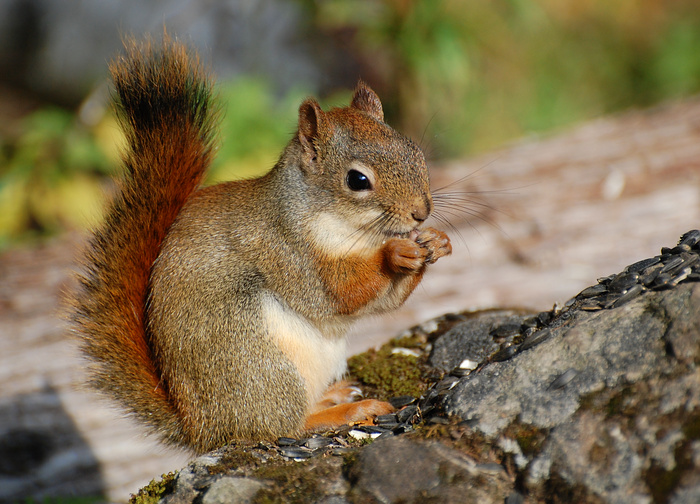
1680x1050 wallpaper
My First Great Grey
January 22nd, 2013
Saw this magnificent fellow in a field along Rockliffe Parkway--a new bird for me.
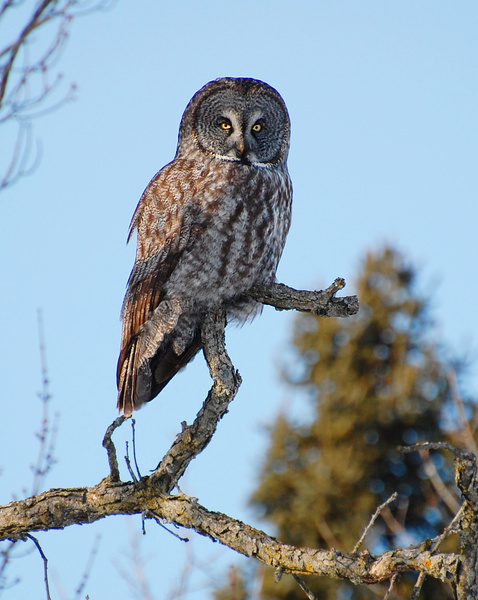
Great Grey Owls are the tallest owls in North America, and arguably the world. (Some give that title to Eurasian Eagle-Owls instead.) But despite their imposing presence, they're really just big fluffballs. Much of their size comes from the dense plumage that insulates them in the northern climes where they live. And though you'd think that birds that grow up to nearly three feet tall would hunt large prey, their favorite food is tiny voles.
Sightings of this species are normally very rare in Ottawa. But about once every 4-5 years, when the rodent population in the boreal forest crashes, numbers of Great Grey Owls move south in winter in search of food. This is one of those years!
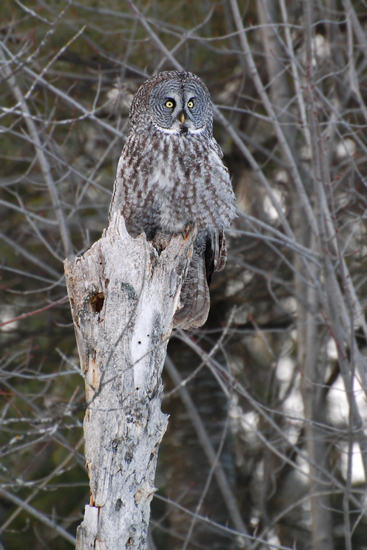
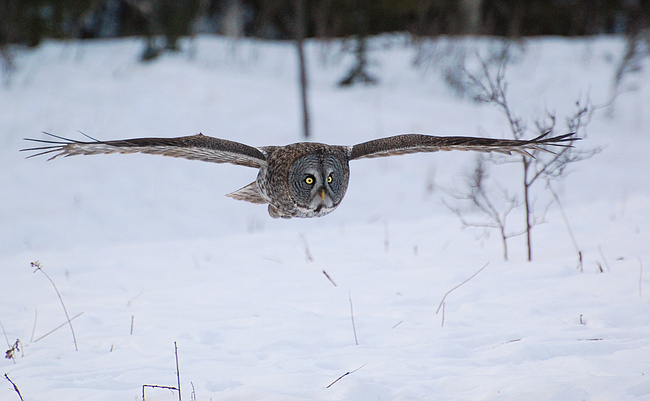
Life bird #322
February 9th, 2013
Discovering this guy was a treat. At long last, I'm starting to get a respectable amount of owls on my lifelist!

Northern Hawk-Owls are aptly named. They are among the few fully diurnal (active by day, sleeping at night) owls. They tend to perch less upright than other owls, they flick their tails like kestrels, and they're even known to hover over fields to search visually for prey. (Great Grey Owls, by comparison, use their keen hearing to detect the sound of tiny feet scurrying under the snow.) The rusty barring on this bird's breast, combined with his checkered wings, very much reminds me of a Red-Shouldered Hawk. Not to mention this is the first time I've seen an owl on a power line.
Like Great Grey, this is a boreal species that is seldom seen in our area. It was probably driven south by a lack of prey. And it may well be eating birds rather than mice. I noticed the local chickadees were not pleased with its presence.
Preening:
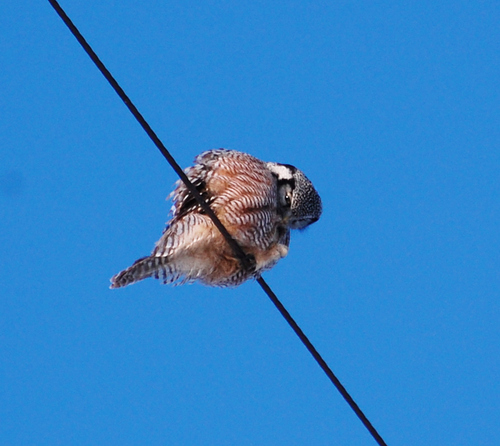
A Feast Of Birch Bark
February 10th, 2013
A little group of porcupines has entertained nature-watchers along Carling Avenue for the last few weeks, eating one of their favorite winter foods, birch bark. The peeling outer layer of birch bark allows them easy access to the inner bark, which is the part they savor. View the first photo at high res to see where patches of bark have been nibbled away.
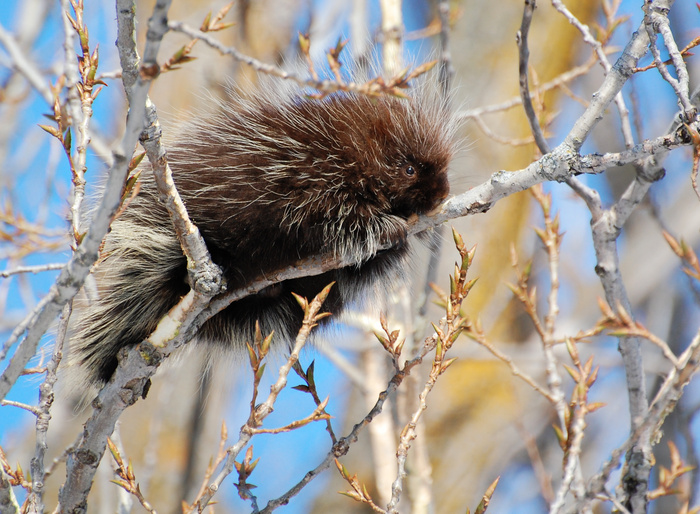
1680x1050 wallpaper
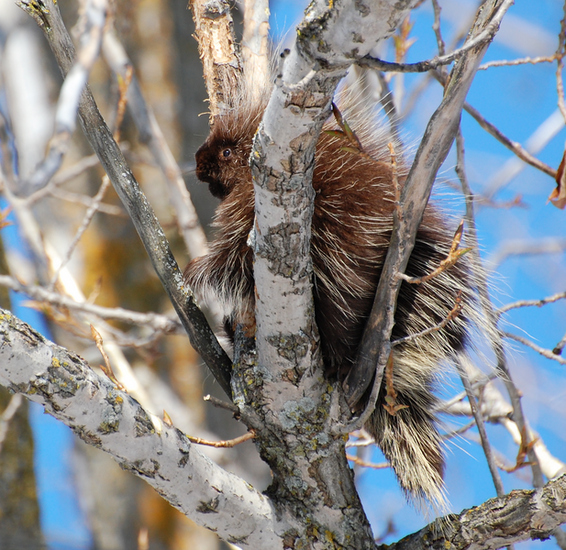
Turkey Crossing
February 13th, 2013
I went to Trail Road looking for a wintering cowbird. Apparently people have been sprinkling birdseed at the landfill gates for him. I found this eating the seed instead!
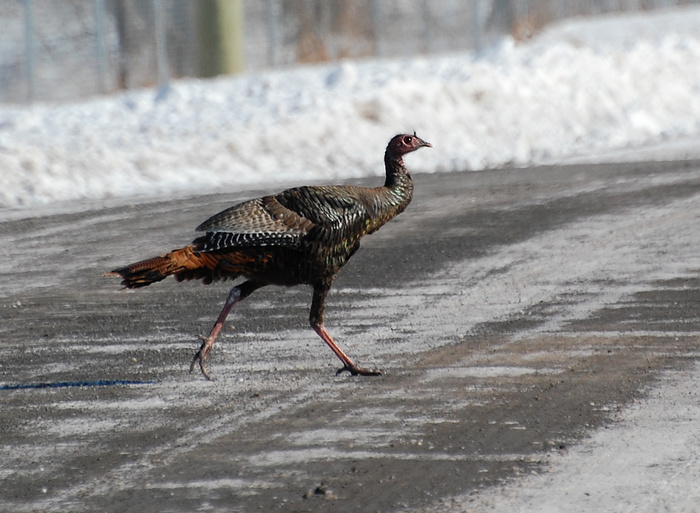
March Valley Grosbeaks
February 23rd, 2013
A flock of Pine Grosbeaks have been regulars at the March Valley Rd. bird feeders all winter, delighting nature-watchers. I often drive down there to look at them since MVR is right next to where I live. Whereas the flock I found in front of my husband's work in November was all drab, olive/gray females and juveniles, this flock has a large percentage of beautiful rose-red mature males.
These are best appreciated at high res, so click on the wallpaper links if you want to enjoy all the details.
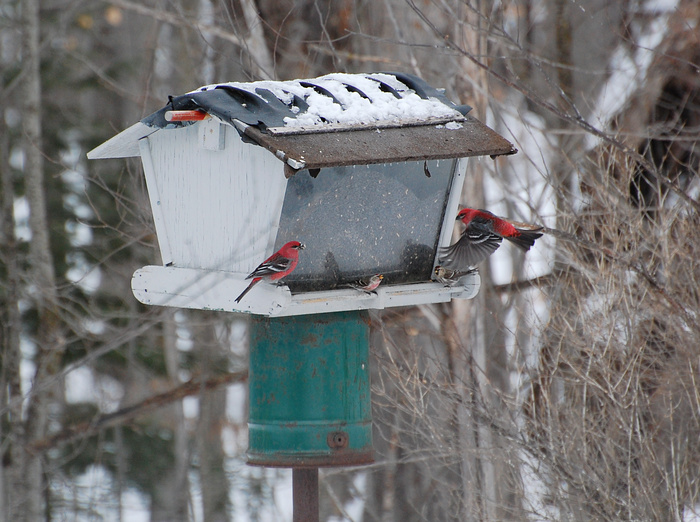
1680x1050 wallpaper
Take a closer look and you can see a Common Redpoll giving one of the grosbeaks a piece of his mind:
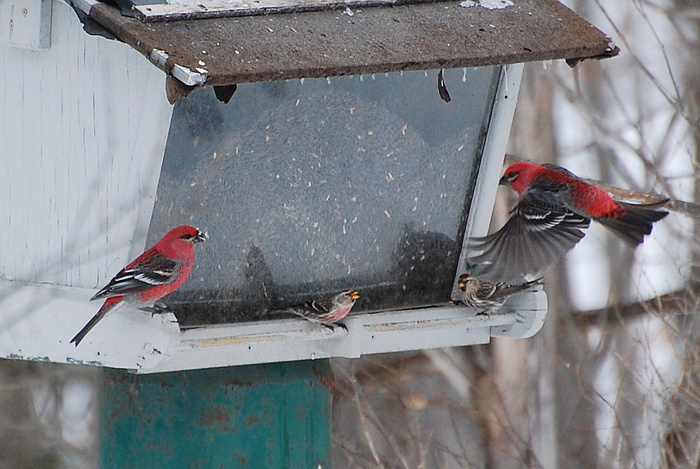
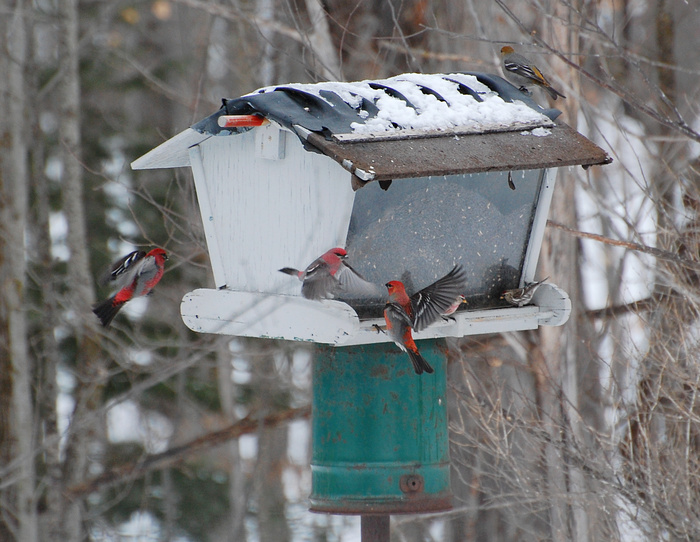
1680x1050 wallpaper
That's a female grosbeak on the top right.
Welcome back, Red-Winged Blackbirds
March 27th, 2013
A ton of snow and below-freezing weather have not stopped them from returning to their breeding grounds, and singing their hearts out. I never tire of them.
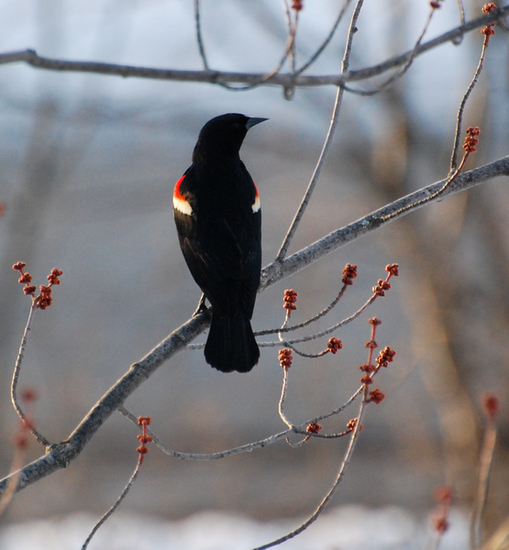
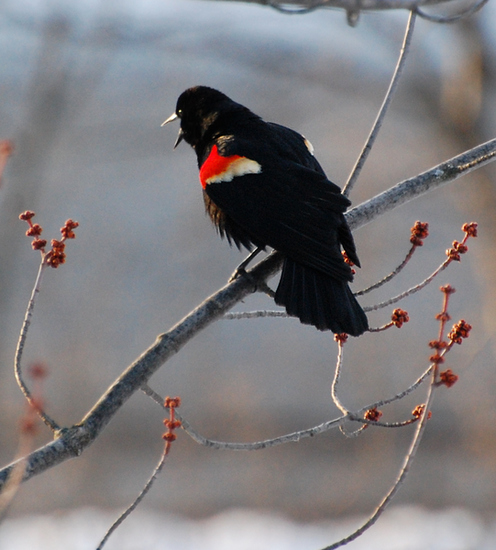
Hoodies At Sunset
April 17th, 2013
A pair of migrant Hooded Mergansers made my evening today. These are usually fairly skittish ducks--indeed, the other three on the pond immediately took off when I arrived--but this pair stayed, and cordially ignored me. The longer I lingered the tamer they got.
As usual, these are all available at higher res on my gallery site, by clicking on the thumbnails.

1680x1050 wallpaper
Male hoodies flash their oversized white hoods to impress the ladies--although this particular female seems sufficiently impressed already!
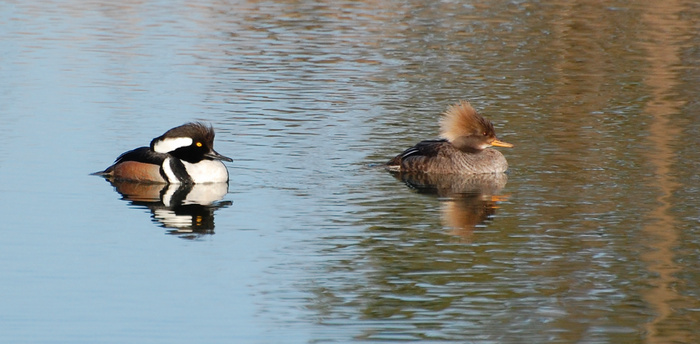
1680x1050 wallpaper
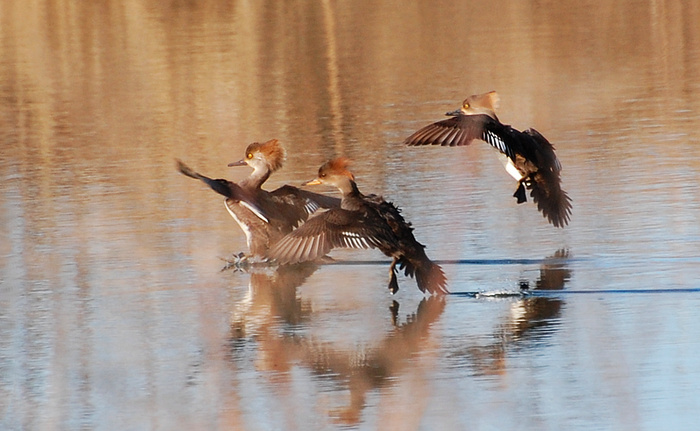
1680x1050 wallpaper
Three more coming in for a landing (perhaps the same three who flushed when I arrived?) The golden eyes and black bills on the first and third betray them as yearling males, not females. These may well be siblings. They probably won't breed until their second year, when the young males will acquire their mature plumage.
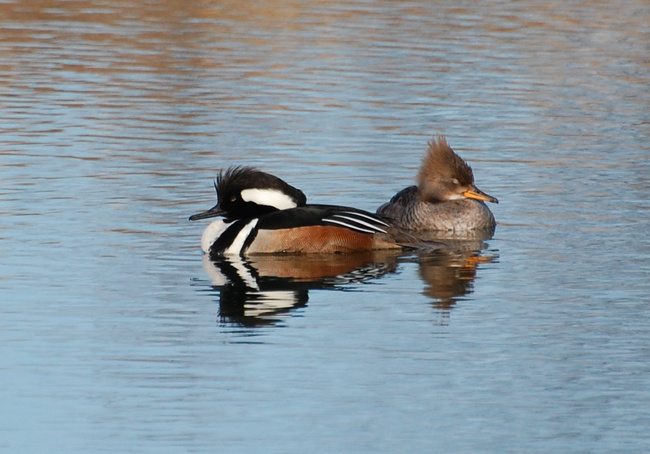
There's a special pleasure for a nature photographer when your subjects are relaxed enough to fall asleep in front of you.
|
